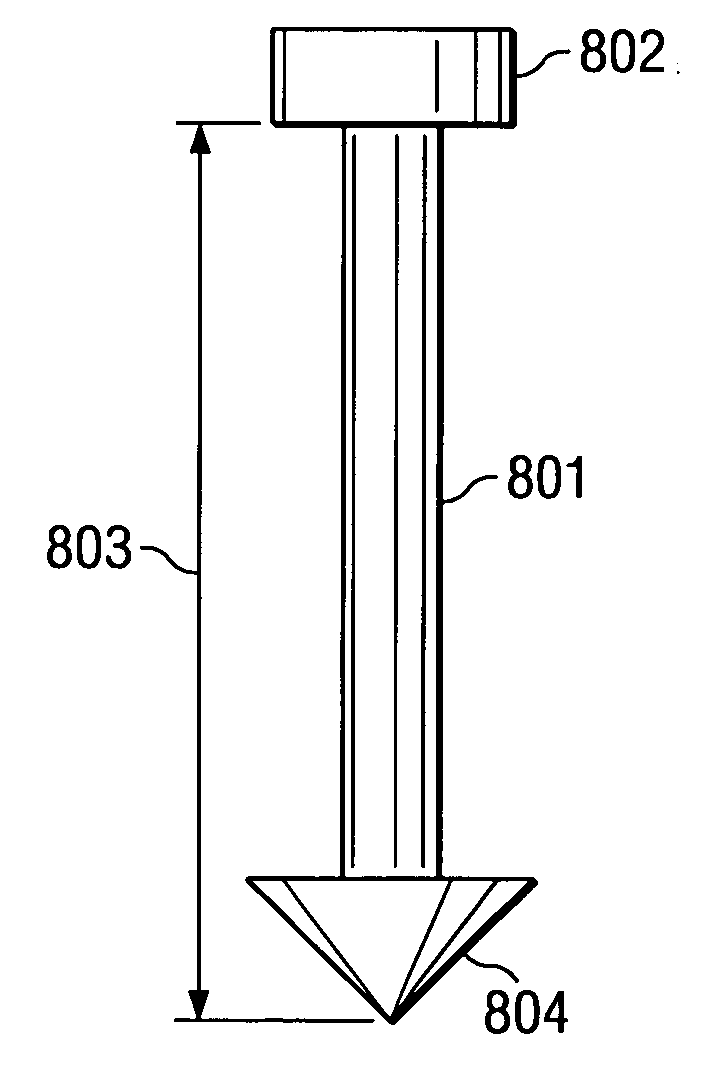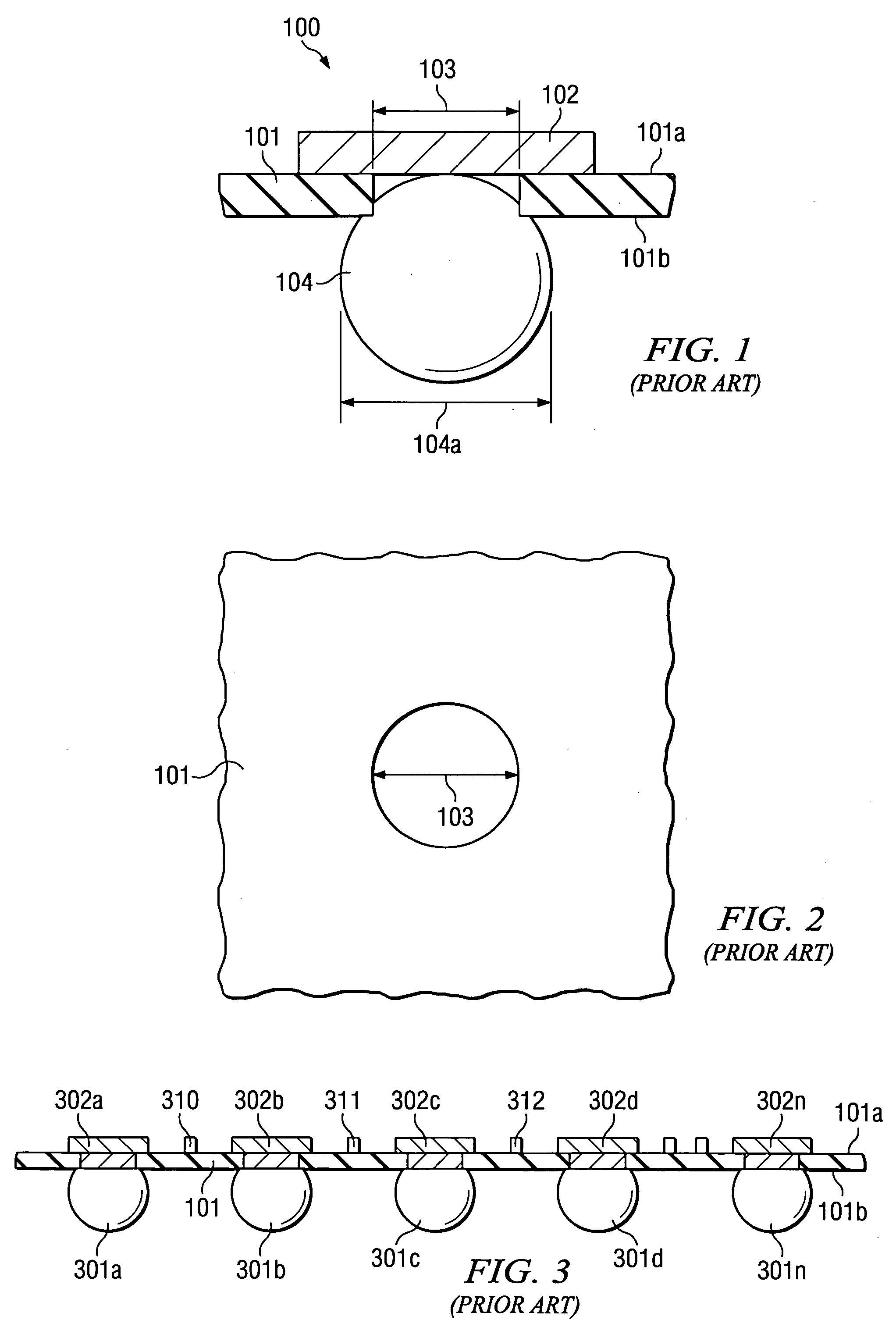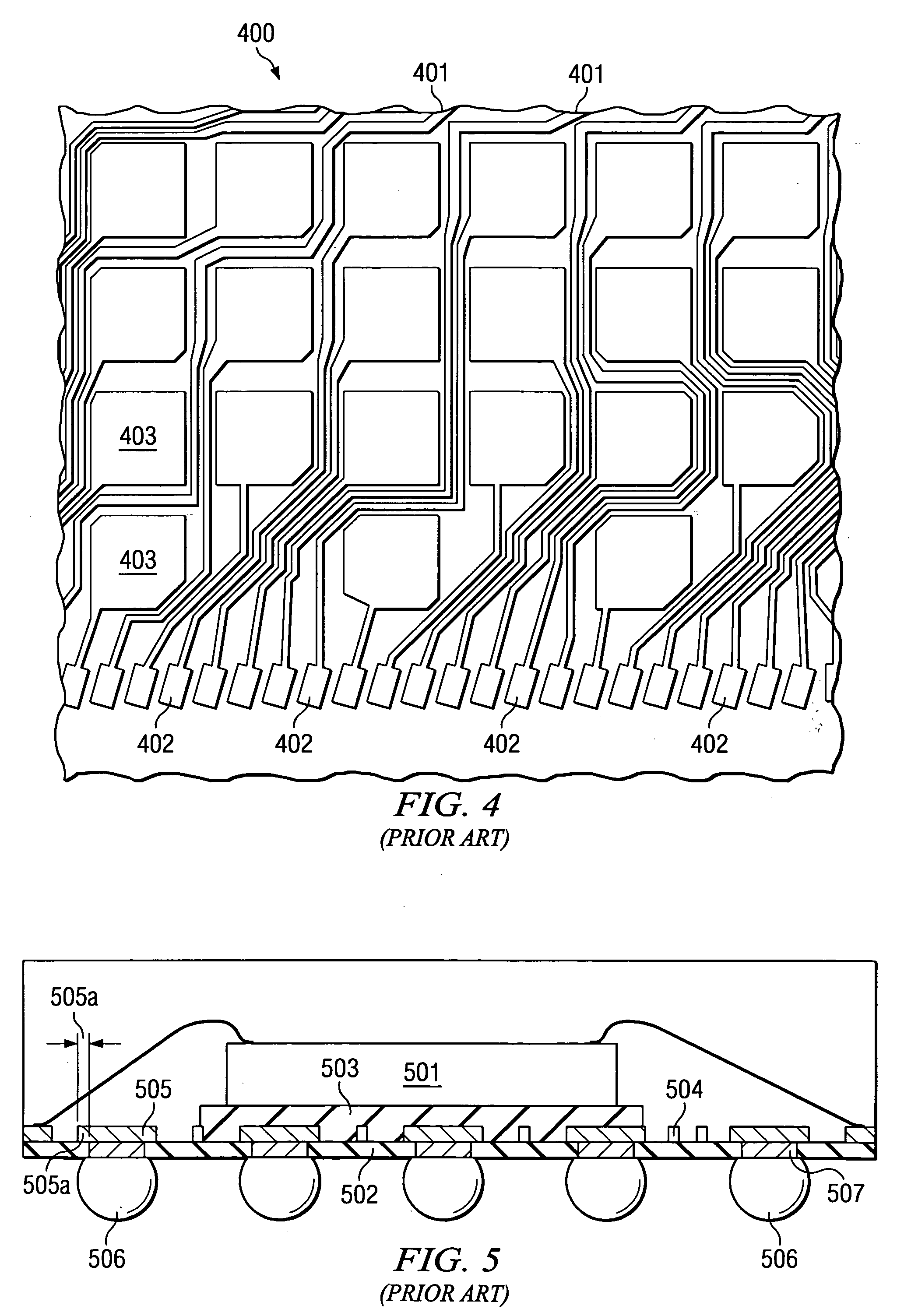Semiconductor package having a grid array of pin-attached balls
a technology of pin-attached balls and semiconductors, which is applied in the direction of printed circuits, sustainable manufacturing/processing, and final product manufacturing, etc., can solve the problems of difficult routing of ball grid array packages, unfavorable high frequency lines, and lack of uniformity, so as to achieve high input/output ratio, high density, and high density
- Summary
- Abstract
- Description
- Claims
- Application Information
AI Technical Summary
Benefits of technology
Problems solved by technology
Method used
Image
Examples
Embodiment Construction
[0026] The impact of the present invention can be most easily appreciated by highlighting the shortcomings of the known technology. As a typical example of the known technology, the schematic cross section of FIG. 1 illustrates a solder-ball (solder bump) connection generally designated 100. In this connection, a substrate 101 with first surface 101a and second surface 101b has a metal layer on first surface 101a. The patterned portion 102 of this metal layer is exposed by a substrate window of diameter 103. This exposed layer portion is contacted by a solder body (“ball”, bump) 104, shown in FIG. 1 after attachment but before reflow; layer portion 102 is thus referred to as “contact pad”.
[0027] The dimensions of opening 103 are related to the diameter 104a of the solder body and the need of creating a large enough interface between body 104 and metal 102 to insure a reliable solder joint. As a consequence of this reliability requirement, window 103 and thus layer portion 102 consum...
PUM
| Property | Measurement | Unit |
|---|---|---|
| thickness | aaaaa | aaaaa |
| thickness | aaaaa | aaaaa |
| diameter | aaaaa | aaaaa |
Abstract
Description
Claims
Application Information
 Login to View More
Login to View More - R&D
- Intellectual Property
- Life Sciences
- Materials
- Tech Scout
- Unparalleled Data Quality
- Higher Quality Content
- 60% Fewer Hallucinations
Browse by: Latest US Patents, China's latest patents, Technical Efficacy Thesaurus, Application Domain, Technology Topic, Popular Technical Reports.
© 2025 PatSnap. All rights reserved.Legal|Privacy policy|Modern Slavery Act Transparency Statement|Sitemap|About US| Contact US: help@patsnap.com



